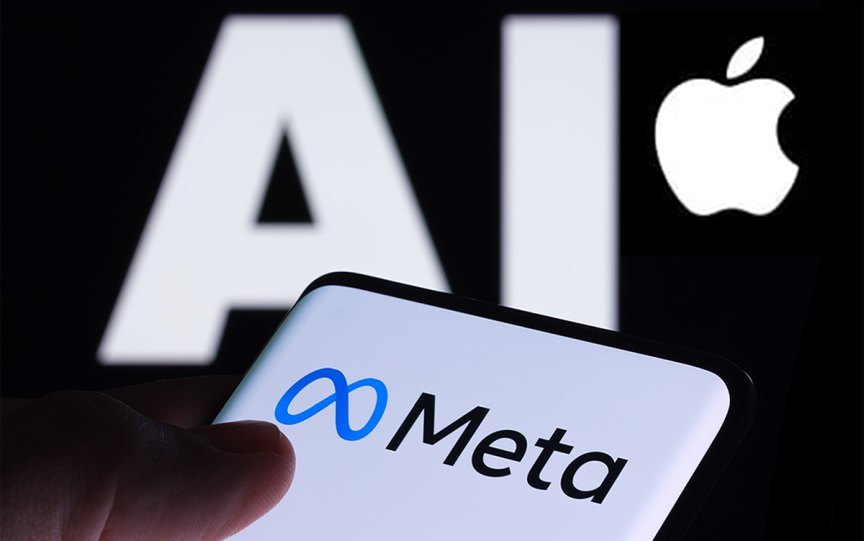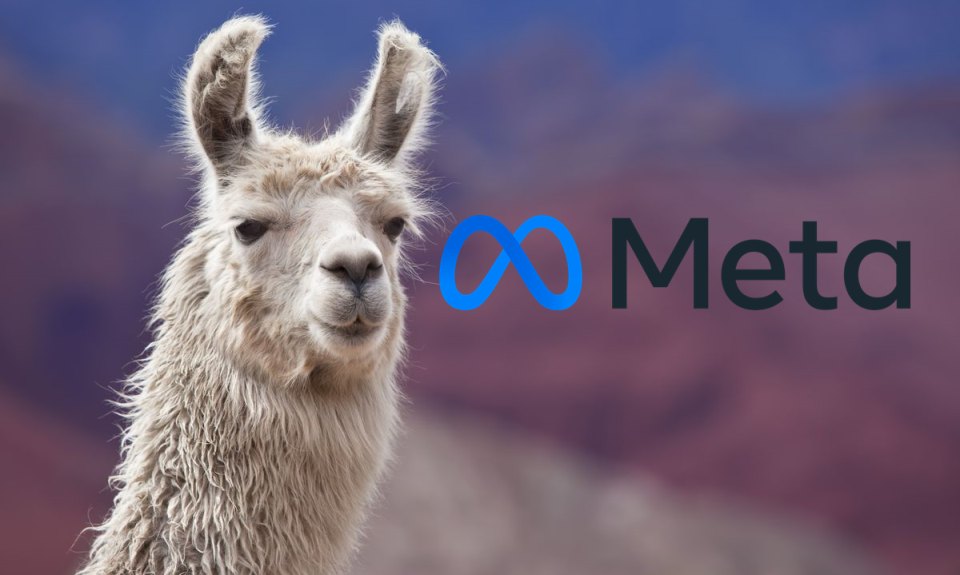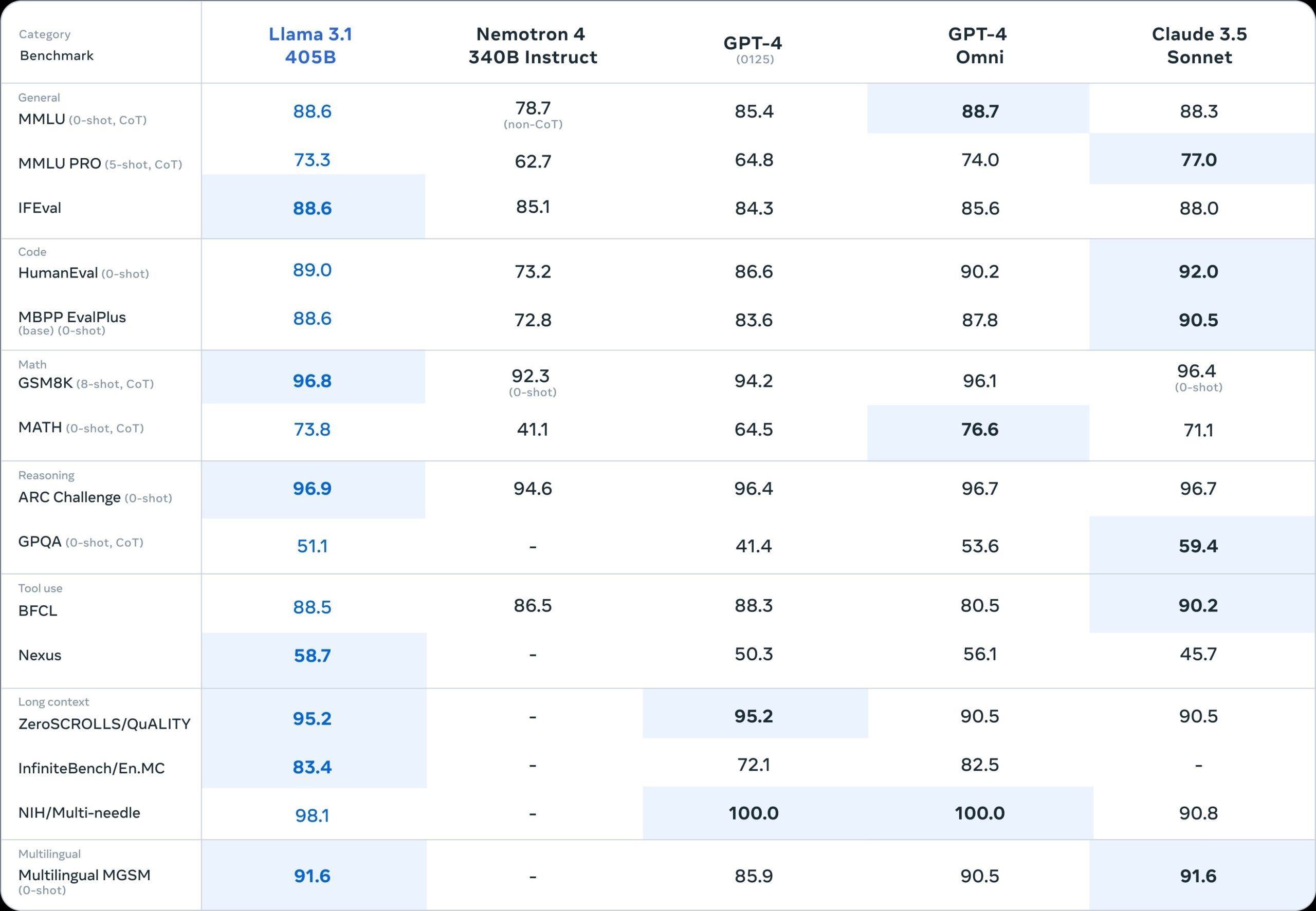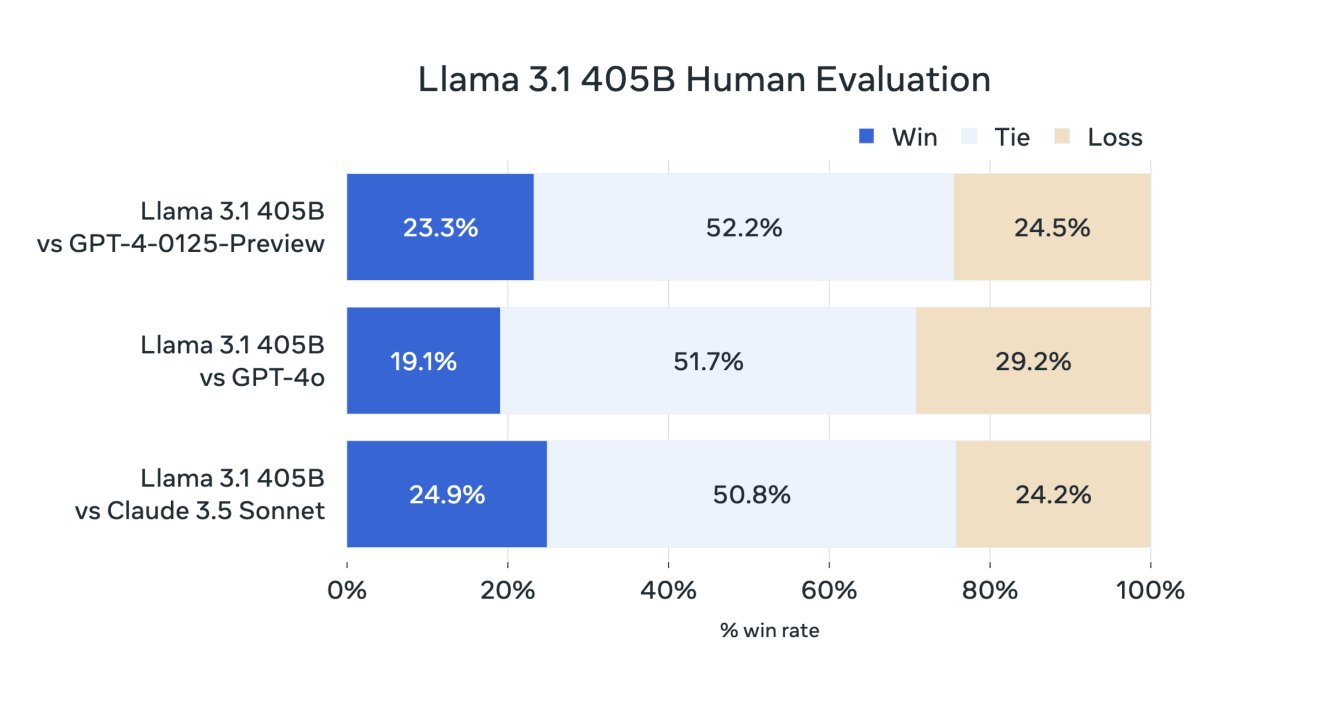Meta unveils Llama 3.1 405B, its newest and largest free AI model with multilingual and math skills

Meta has just unveiled the latest version of its Llama artificial intelligence model that boasts multilingual skills and advanced performance metrics that rival the industry’s top-paid models, such as those from OpenAI.
Dubbed Llama 3.1, this new version of Meta’s Llama series now supports eight languages, delivers superior computer code quality, and tackles complex mathematical problems with greater ease, according to a series of blog posts and a research paper released by Meta.
The Llama 3.1 technology comes in three distinct versions, including the largest and most potent AI model Meta has developed to date. In keeping with previous versions, Llama 3.1 remains open source, offering free access to its powerful capabilities.
This release signals Meta’s commitment to competing with major players in the AI space, such as OpenAI, Anthropic, Google, and Amazon. Meta’s significant investment in AI underscores its intent to stay competitive with these tech giants.
“Until now, open source large language models have lagged behind their proprietary counterparts in terms of performance and capabilities. Today marks a turning point as open source takes the lead. We’re proud to introduce Meta Llama 3.1 405B, the world’s largest and most capable open foundation model. With over 300 million downloads of all Llama versions combined, this is just the beginning,” Meta proclaimed in a blog post.
The launch also highlights Meta’s growing collaboration with Nvidia. Nvidia continues to play a crucial role by supplying Meta with GPUs essential for training its AI models, including Llama 3.1.

Llama 3.1 405B
Unlike OpenAI, which monetizes its models through paid access and ancillary services, Meta has no plans to launch a competing enterprise business. Instead, Meta is taking a similar approach to its Llama 2 release by partnering with various tech companies to offer Llama 3.1 through their cloud computing platforms. These partners, which include Amazon Web Services, Google Cloud, Microsoft Azure, Databricks, and Dell, will also provide security and management tools for the new software.
The new Llama models are equipped with expanded “context windows,” allowing them to handle larger user inputs and improve performance, particularly in generating computer code. Ahmad Al-Dahle, Meta’s head of generative AI, noted that this upgrade addresses community feedback by providing models with a “longer memory” to better manage multi-step tasks.
Meta’s strategy of offering its Llama models free to developers is intended to spur innovation and enhance engagement across its social networks. While some investors have expressed concerns about the associated costs, Meta believes that encouraging developers to use its free models could disrupt the business models of paid competitors.
Llama 3.1 Model Evaluations
In its latest release, Meta assessed Llama 3.1 against more than 150 benchmark datasets covering diverse languages. The evaluation also included comprehensive human assessments, comparing Llama 3.1 with leading models in practical scenarios. Early findings indicate that Llama 3.1 stands strong against top-tier foundation models, such as GPT-4, GPT-4o, and Claude 3.5 Sonnet, across various tasks. Furthermore, Meta’s smaller Llama models demonstrate competitive performance when matched against both proprietary and open models with similar parameter counts.


Preliminary results from Meta’s testing show Llama 3.1 making impressive strides in performance benchmarks. For instance, in the MATH benchmark, which assesses complex math problems, Llama 3.1 scored 73.8, approaching the scores of competitors GPT-4o (76.6) and Claude 3.5 Sonnet (71.1). On the MMLU benchmark, which spans various subjects, Llama 3.1 achieved a score of 88.6, narrowly trailing GPT-4o (88.7) but surpassing Claude 3.5 Sonnet (88.3).
Additionally, Meta’s research paper hinted at future “multimodal” versions of Llama 3.1 that will incorporate image, video, and speech processing capabilities. Early tests suggest these upcoming models will compete effectively with other multimodal technologies such as Google’s Gemini 1.5 and Anthropic’s Claude 3.5 Sonnet.




